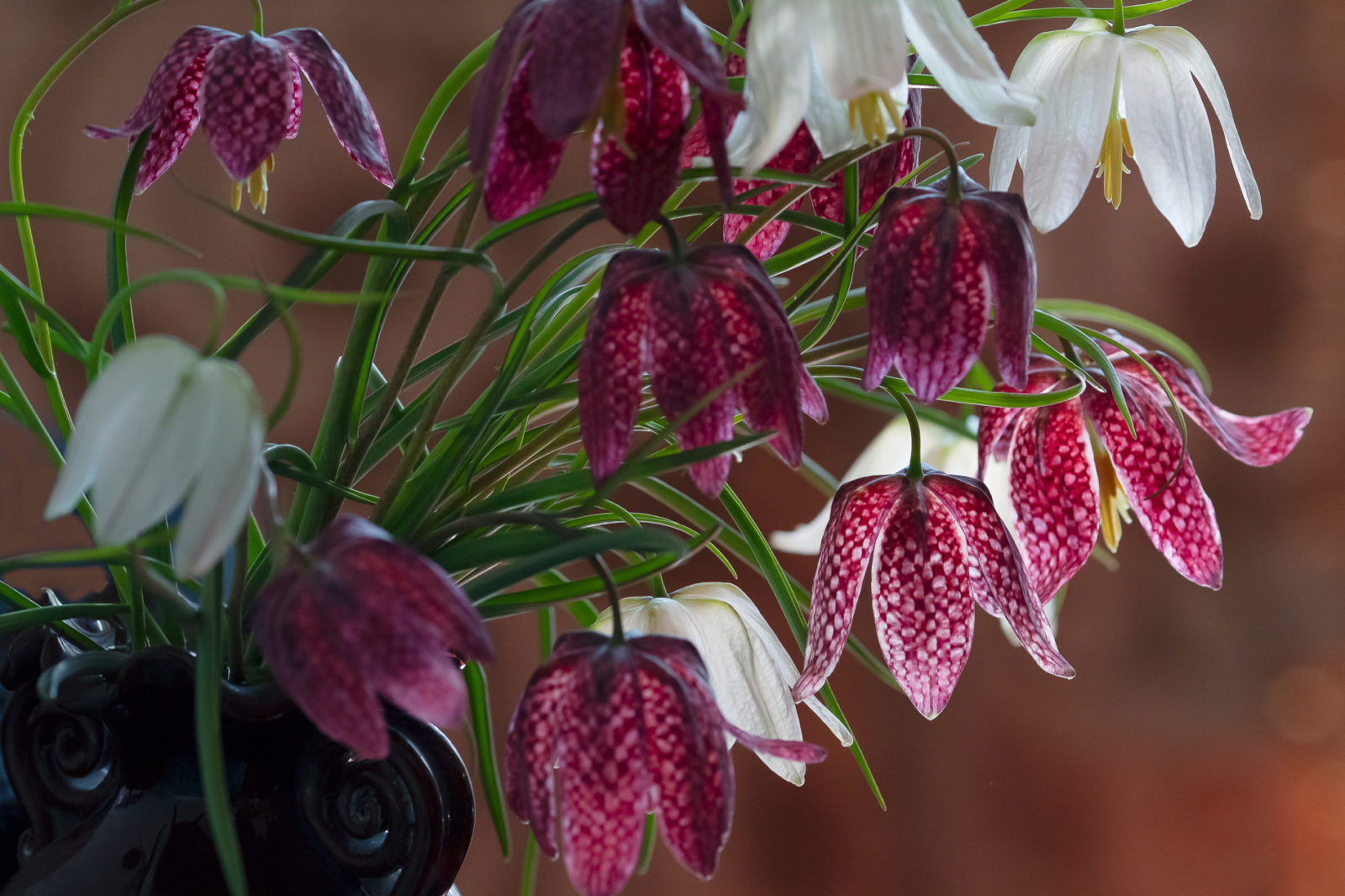
Fritillaria is a fascinating genus of flowering plants in the lily family, known for their unique and often striking appearance. These plants, which include species like the Fritillaria meleagris or snake's head fritillary, have captivated botanists and gardeners alike for centuries. With their bell-shaped flowers and intricate patterns, they add a touch of elegance to any garden. But there's more to these plants than just their beauty. Did you know that some species of fritillaria have been used in traditional medicine? Or that they can be found in a variety of habitats, from meadows to mountainous regions? Let's dive into 36 intriguing facts about these remarkable plants and uncover their secrets.
What is Fritillaria?
Fritillaria is a genus of flowering plants in the lily family. These plants are known for their unique, bell-shaped flowers and often striking patterns. Let's dive into some fascinating facts about these captivating plants.
- Fritillaria comes from the Latin word "fritillus," meaning dice box, due to the checkered pattern on some species' flowers.
- There are over 100 species of Fritillaria, found mainly in the Northern Hemisphere.
- These plants are perennial, meaning they live for more than two years.
- Fritillaria flowers can be yellow, green, purple, or even black.
- The bulbs of some species are used in traditional Chinese medicine.
- Fritillaria meleagris, also known as the snake's head fritillary, is famous for its checkered petals.
- These plants prefer well-drained soil and can often be found in meadows and woodlands.
- Fritillaria imperialis, or the crown imperial, has a strong, musky odor that deters pests.
- Some species of Fritillaria are endangered due to habitat loss and over-collection.
- Fritillaria species can be grown from seeds, but it may take several years for them to flower.
Fritillaria in History and Culture
Fritillaria has a rich history and cultural significance in various parts of the world. Here are some intriguing facts about its historical and cultural connections.
- In ancient Persia, Fritillaria imperialis was a symbol of royalty and power.
- The plant is mentioned in Chinese texts dating back over 2,000 years.
- In the Victorian language of flowers, Fritillaria symbolizes persecution and sorrow.
- Fritillaria meleagris is the county flower of Oxfordshire, England.
- The bulbs of Fritillaria thunbergii are used in traditional Chinese medicine to treat coughs and respiratory issues.
- In Turkey, Fritillaria is known as "Ağlayan Gelin," which means "weeping bride" due to the drooping flowers.
- The plant has been featured in various works of art, including paintings and literature.
- Fritillaria species have been cultivated in gardens since the 16th century.
- The name "snake's head fritillary" comes from the flower's resemblance to a snake's head.
- Fritillaria is often associated with spring and renewal due to its early blooming period.
Interesting Botanical Features
Fritillaria plants have some unique botanical features that make them stand out. Here are some facts about their distinctive characteristics.
- The flowers of Fritillaria are usually nodding, meaning they hang downward.
- Some species have a checkered or tessellated pattern on their petals.
- Fritillaria bulbs are often deeply buried, sometimes up to a foot underground.
- The leaves of Fritillaria are typically narrow and lance-shaped.
- Fritillaria imperialis has a crown of leaves at the top of the stem, giving it a regal appearance.
- The flowers of Fritillaria are often solitary, but some species have clusters of blooms.
- Fritillaria species are known for their ability to thrive in rocky and mountainous regions.
- The plants have a unique way of storing nutrients in their bulbs, allowing them to survive harsh conditions.
- Fritillaria flowers are usually pollinated by bees and other insects.
- Some species of Fritillaria have a faint, sweet fragrance, while others have a more pungent smell.
Conservation and Environmental Impact
Fritillaria plants play an important role in their ecosystems, but they also face various threats. Here are some facts about their conservation status and environmental impact.
- Many Fritillaria species are considered vulnerable or endangered due to habitat destruction.
- Over-collection of wild Fritillaria bulbs for medicinal use has led to population declines.
- Conservation efforts are underway to protect and restore Fritillaria habitats.
- Fritillaria plants provide nectar and pollen for bees and other pollinators.
- The plants can help stabilize soil in rocky and mountainous areas, preventing erosion.
- Growing Fritillaria in gardens can help support biodiversity and provide habitat for pollinators.
Fascinating World of Fritillaria
Fritillaria, with its unique bell-shaped flowers and diverse species, offers a captivating glimpse into the plant kingdom. These plants, often found in mountainous regions, have adapted to various climates, showcasing nature's resilience. Some species, like the Fritillaria imperialis, are known for their striking appearance and historical significance in gardens worldwide. Others, such as the Fritillaria meleagris, display intricate patterns that resemble a checkerboard, adding to their allure.
Beyond their beauty, Fritillaria species have been used in traditional medicine, particularly in Asia, for their potential health benefits. However, it's essential to approach their medicinal use with caution due to varying toxicity levels among species. Whether you're a gardening enthusiast or a nature lover, exploring the world of Fritillaria can be both educational and inspiring. These plants remind us of the incredible diversity and adaptability found in nature.
Was this page helpful?
Our commitment to delivering trustworthy and engaging content is at the heart of what we do. Each fact on our site is contributed by real users like you, bringing a wealth of diverse insights and information. To ensure the highest standards of accuracy and reliability, our dedicated editors meticulously review each submission. This process guarantees that the facts we share are not only fascinating but also credible. Trust in our commitment to quality and authenticity as you explore and learn with us.


